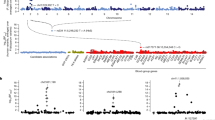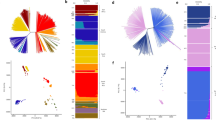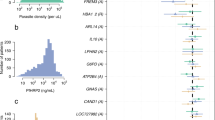Abstract
Despite clinical and pathological distinctions between malaria and hypertension, accumulated epidemiological and evolutionary evidence indicate the need of deeper understanding how severe malaria contributes to elevated hypertension risk. Malaria is said to exert strong selection pressure on the host genome, thus selecting certain genetic polymorphisms. Few candidate polymorphisms have also been reported in the RAS (ACE I/D and ACE2 rs2106809) that are shown to increase angiotensin II (ang II) levels in a combinatorial manner. The raised ang II has some antiplasmodial actions in addition to protecting against severe/cerebral malaria. It is hypothesized that RAS polymorphisms may have been naturally selected over time in the malaria-endemic areas in such a way that hypertension, or the risk thereof, is higher in such areas as compared to non-malaria endemic areas. The purpose of this review is to gain deeper insights into various sparse evidence linking malaria and hypertension and suggesting a way forward.
This is a preview of subscription content, access via your institution
Access options
Subscribe to this journal
Receive 12 digital issues and online access to articles
$119.00 per year
only $9.92 per issue
Buy this article
- Purchase on Springer Link
- Instant access to full article PDF
Prices may be subject to local taxes which are calculated during checkout

Similar content being viewed by others
References
Gouda HN, Charlson F, Sorsdahl K, Ahmadzada S, Ferrari AJ, Erskine H, et al. Burden of non-communicable diseases in sub-Saharan Africa, 1990–2017: results from the Global Burden of Disease Study 2017. Lancet Glob Heal. 2019;7:e1375–87.
Kwiatkowski DP. How malaria has affected the human genome and what human genetics can teach us about malaria. Am J Hum Genet. 2005;77:171–92.
Miller LH. Impact of malaria on genetic polymorphism and genetic diseases in Africans and African Americans. Proc Natl Acad Sci USA 1994;91:2415–9.
Gallego-Delgado J, Rodriguez A. Malaria and hypertension. Another co-evolututionary adaptation?. Front Cell Infect Microbiol. 2014;4:1–4.
Volpe M, Battistoni A, Mancia G. Angiotensin II-linked hypothesis to understand the advantage of the coevolution of hypertension and malaria. Circ Res. 2016;119:1046–8.
Etyang AO, Smeeth L, Cruickshank JK, Scott JAG. The malaria-high blood pressure hypothesis. Circ Res. 2016;119:36–40.
Gallego-delgado J, Ruiz-ortega M, Gallego-delgado J, Basu-roy U, Ty M, Alique M, et al. Angiotensin receptors and b -catenin regulate brain endothelial integrity in malaria. J Clin Invest. 2016;126:4016–29.
Rigat B, Hubert C, Alhenc-gelas F, Cambien F, Corvol P, Soubrier F. An insertion/deletion polymorphism in the angiotensin I-converting enzyme gene accounting for half the variance of serum enzyme levels. J Clin Invest. 1990;86:1343–6.
Liu D, Chen Y, Zhang P, Zhong J, Jin L, Zhang C, et al. Association between circulating levels of ACE2-Ang-(1-7)-MAS axis and ACE2 gene polymorphisms in hypertensive patients. Medicine. 2016;95:1–6.
Chen YY, Zhang P, Zhou XM, Liu D, Zhong JC, Zhang CJ, et al. Relationship between genetic variants of ACE2 gene and circulating levels of ACE2 and its metabolites. J Clin Pharm Ther. 2018;43:189–95.
Smithies O, Kim H-S, Takahashi N, Edgell MH. Importance of quantitative genetic variations in the etiology of hypertension. Kidney Int. 2000;58:2265–80.
Neel JV, Weder AB, Julius S. Type II diabetes, essential hypertension, and obesity as “syndromes of impaired genetic homeostasis”: the “thrifty genotype” hypothesis enters the 21st century. Perspect Biol Med. 1998;42:44–74.
Ghafil FA, Mohammad BI, Al-Janabi HS, Hadi NR, Al-Aubaidy HA. Genetic polymorphism of angiotensin converting enzyme and angiotensin II type 1 receptors and their impact on the outcome of acute coronary syndrome. Genomics. 2019;112:867–72.
Tiwari A, De A, Pande V, Sinha A. Human angiotensin-converting enzyme may be under malaria selection pressure: a need to explore. Hum Cell. 2021;34:289–90.
Fan X, Wang Y, Sun K, Zhang W, Yang X, Wang S, et al. Polymorphisms of ACE2 gene are associated with essential hypertension and antihypertensive effects of captopril in women. Clin Pharm Ther. 2007;82:187–96.
Maciel C, de Oliveira VX, Fázio MA, Nacif-Pimenta R, Miranda A, Pimenta PFP, et al. Anti-plasmodium activity of angiotensin II and related synthetic peptides. PLoS One. 2008;3:e3296.
Silva AF, Bastos EL, Torres MDT, Costa-Da-Silva AL, Ioshino RS, Capurro ML, et al. Antiplasmodial activity study of angiotensin II via Ala scan analogs. J Pept Sci. 2014;20:640–8.
Gallego-Delgado J, Baravian C, Edagha I, Ty MC, Ruiz-Ortega M, Xu W, et al. Angiotensin II moderately decreases Plasmodium infection and experimental cerebral malaria in mice. PLoS One. 2015;10:1–8.
Chamlian M, Bastos EL, Maciel C, Capurro ML, Miranda A, Silva AF, et al. A study of the anti-plasmodium activity of angiotensin II analogs. J Pept Sci. 2013;19:575–80.
Marcelo Der Torossian T, Silva AF, Alves FL, Capurro ML, Miranda A, Vani, et al. Highly potential antiplasmodial restricted peptides. Chem Biol Drug Des. 2014;85:163–71.
Silva AF, de Souza Silva L, Alves FL, Der Torossian Torres M, de SáPinheiro AA, Miranda A, et al. Effects of the angiotensin II Ala-scan analogs in erythrocytic cycle of Plasmodium falciparum (in vitro) and Plasmodium gallinaceum (ex vivo). Exp Parasitol. 2015;153:1–7.
Silva AF, Torres MDT, Silva LDS, Alves FL, Acácia A, Pinheiro DS, et al. New linear antiplasmodial peptides related to angiotensin II. Malar J. 2015;14:1–10.
Torres MDT, Silva AF, Alves FL, Capurro ML, Miranda A, Cordeiro RM, et al. Evidences for the action mechanism of angiotensin II and its analogs on Plasmodium sporozoite membranes. J Pept Sci. 2016;22:132–42.
Silva AF, Torres MDT, Silva LS, Alves FL, De Sá Pinheiro AA, Miranda A, et al. Angiotensin II-derived constrained peptides with antiplasmodial activity and suppressed vasoconstriction. Sci Rep. 2017;7:1–10.
Saraiva VB, de Souza Silva L, Ferreira-DaSilva CT, da Silva-Filho JL, Teixeira-Ferreira A, Perales J, et al. Impairment of the Plasmodium falciparum erythrocytic cycle induced by angiotensin peptides. PLoS One. 2011;6:e17174.
Der Torossian Torres M, Silva AF, De Souza Silva L, De Sá Pinheiro AA, Oliveira VX. Angiotensin II restricted analogs with biological activity in the erythrocytic cycle of Plasmodium falciparum. J Pept Sci. 2014;21:24–8.
Silva LS, Silva-Filho JL, Caruso-Neves C, Pinheiro AAS. New concepts in malaria pathogenesis: the role of the renin-angiotensin system. Front Cell Infect Microbiol. 2016;5:103.
Merckx A, Nivez MP, Bouyer G, Alano P, Langsley G, Deitsch K, et al. Plasmodium falciparum regulatory subunit of cAMP-dependent PKA and anion channel conductance. PLoS Pathog. 2008;4:e19.
Petersen JEV, Lavstsen T, Craig A. Breaking down brain barrier breaches in cerebral malaria. J Clin Invest. 2016;126:3725–7.
Abdulazeez AM, Ya’u M, Kurfi B. Association of hypertension and activity of angiotensin converting enzyme in malaria patients attending sheik muhammad Jidda General Hospital, Kano State, Nigeria. Niger J Basic Clin Sci. 2017;14:121–6.
Dhangadamajhi G, Mohapatra BN, Kar SK, Ranjit M. Gene polymorphisms in angiotensin I converting enzyme (ACE I/D) and angiotensin II converting enzyme (ACE2 C>T) protect against cerebral malaria in Indian adults. Infect Genet Evol. 2010;10:337–41.
Nwokocha CR, Bafor EE, Ajayi OI, Ebeigbe AB. The malaria-high blood pressure hypothesis: revisited. Am J Hypertens. 2020;33:695–702.
Etyang AO, Wandabwa CK, Kapesa S, Muthumbi E, Odipo E, Wamukoya M, et al. Blood pressure and arterial stiffness in Kenyan adolescents with the sickle cell trait. Am J Epidemiol. 2017;187:199–205.
Etyang AO, Kapesa S, Med DC, Odipo E, Bauni E, Kyobutungi C, et al. Effect of previous exposure to malaria on blood pressure in Kilifi: a mendelian randomization study. J Am Hear Assoc 2019;8:e011771.
Singer DRJ, Missouris CG, Jeffery S. Angiotensin-converting enzyme gene polymorphism what to do about all the confusion? Circulation. 1996;94:236–9.
Ji LD, Li JY, Yao BB, Cai XB, Shen QJ, Xu J. Are genetic polymorphisms in the renin-angiotensin-aldosterone system associated with essential hypertension? Evidence from genome-wide association studies. J Hum Hypertens. 2017;31:695–8.
Bosso M, Thanaraj TA, Abu-Farha M, Alanbaei M, Abubaker J, Al-Mulla F. The two faces of ACE2: the role of ACE2 receptor and its polymorphisms in hypertension and COVID-19. Mol Ther Methods Clin Dev. 2020;18:321–7.
Luzzatto L. Genes expressed in red cells could shape a malaria attack. Lancet Haematol. 2018;5:e322–3.
Verdecchia P, Angeli F, Reboldi G. Does Malaria cause hypertension? Circ Res. 2016;119:7–9.
Silva LS, Peruchetti DB, Silva CTF, Ferreira-DaSilva AT, Perales J, Caruso-Neves C, et al. Interaction between bradykinin B2 and Ang-(1-7) Mas receptors regulates erythrocyte invasion by Plasmodium falciparum. Biochim Biophys Acta. 2016;1860:2438–44.
Gallego-Delgado J, Walther T, Rodriguez A. The high blood pressure-malaria protection hypothesis. Circ Res. 2016;119:1071–5.
Eze IC, Bassa FK, Essé C, Koné S, Acka F, Laubhouet-Koffi V, et al. Epidemiological links between malaria parasitaemia and hypertension: findings from a population-based survey in rural Côte d’Ivoire. J Hypertens. 2019;37:1384–92.
Volpe M, Battistoni A. An evolutionary rebus: the complex link between malaria and hypertension. J Hypertens. 2019;37:1344–6.
Dhangadamajhi G, Singh S. Malaria link of hypertension: a hidden syndicate of angiotensin II, bradykinin and sphingosine 1-phosphate. Hum Cell. 2021;34:734–44.
Acknowledgements
The authors are thankful to the Director ICMR-National Institute of Malaria Research for encouragement and support in preparing the manuscript. We thank the Department of Biotechnology, Kumaun University for the academic support of the Ph.D. program to AT.
Funding
This work was supported by the Indian Council of Medical Research (ICMR), New Delhi [Grant no. fellowship/42/2018-ECD-II], to AD and the Council of Scientific and Industrial Research (CSIR), New Delhi [Grant No.: 09/905 (0017) /2017-EMR-I] to AT.
Author information
Authors and Affiliations
Contributions
AD and AT wrote the first draft, analyzed the data, and edited the manuscript. VP helped in academic support and edited the manuscript. AT and AS made the table. AD and AS made the figures. AS conceived the idea, designed the project critically reviewed, edited, and finalized the manuscript; All authors read and approved the final manuscript to be published.
Corresponding author
Ethics declarations
Competing interests
The authors declare no competing interests.
Additional information
Publisher’s note Springer Nature remains neutral with regard to jurisdictional claims in published maps and institutional affiliations.
Rights and permissions
About this article
Cite this article
De, A., Tiwari, A., Pande, V. et al. Evolutionary trilogy of malaria, angiotensin II and hypertension: deeper insights and the way forward. J Hum Hypertens 36, 344–351 (2022). https://doi.org/10.1038/s41371-021-00599-0
Received:
Revised:
Accepted:
Published:
Issue Date:
DOI: https://doi.org/10.1038/s41371-021-00599-0



